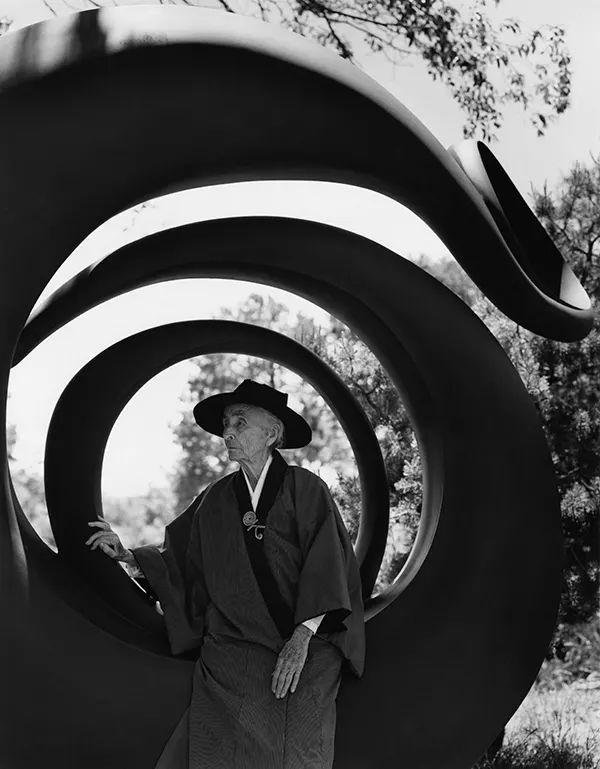CALDER JEWELS
- Veronique Goguen
- Nov 19, 2020
- 4 min read
Updated: Mar 28, 2021
Calder began sculpting with brass, a more affordable option during the war years, and as he honed his metalworking skills, he incorporated silver and gold. He would continue embellishing pieces with ceramic, glass and wood shards, as well as other found objects.
Though Calder’s avant-garde rings, tiaras, necklaces and brooches gained traction with celebrities and notable figures, the artist refused to mass-produce his creations.
Rather than using traditional jewelry techniques like soldering and welding, Calder created all fixings and links through bent metal. His jewels often show tool marks and unpolished surfaces, adding to their handcrafted charm.
Indeed, Calder’s jewels reflected his appetite to create and experiment with motion, balance, space and form. Constructed as coils, spirals, waves, zigzags and hearts, these ornaments never took themselves too seriously. Instead, it is their fearless embrace of whimsy and inherent impracticality that defied convention, then and now.
Extracts from Sothebys

Although well known for his iconic mobiles and monumental outdoor sculptures, Alexander Calder also possessed an exceptional talent for working on a more intimate scale and throughout his career produced exquisite pieces of jewelry.
Of all of Alexander Calder’s work, it was his jewelry that became most personal to the artist. Often created for close friends and acquaintances, it is regarded by some as the purest manifestation of his art. Each piece was individually designed and hand-made by the artist, offering unique pieces that not only contained a combination of his signature working practices but also displayed the same sense of artistic formality and sense of grace that is contained in his larger-scaled projects.
Extract from Christies




Alexander Calder loved the spiral sign and often repeated it in his jewellery. He believed it to be a talisman of a successful life.

Calder began sculpting with brass, a more affordable option during the war years, and as he honed his metalworking skills, he incorporated silver and gold. He would continue embellishing pieces with ceramic, glass and wood shards, as well as other found objects.
Though Calder’s avant-garde rings, tiaras, necklaces and brooches gained traction with celebrities and notable figures, the artist refused to mass-produce his creations.
Rather than using traditional jewelry techniques like soldering and welding, Calder created all fixings and links through bent metal. His jewels often show tool marks and unpolished surfaces, adding to their handcrafted charm.
Indeed, Calder’s jewels reflected his appetite to create and experiment with motion, balance, space and form. Constructed as coils, spirals, waves, zigzags and hearts, these ornaments never took themselves too seriously. Instead, it is their fearless embrace of whimsy and inherent impracticality that defied convention, then and now.
Extracts from Sothebys




Calder’s jewelry appealed to women with avant-garde tastes who liked to make a dramatic entrance.
Extract from NY Times


Extract from









Imogen Cunningham took this photograph in 1950, capturing Margaret Schevill adorned with her Calder necklace. A neighbor and close friend of the artist’s sister, Peggy Hayes, Schevill acquired it directly from Calder. Two spirals ground the necklace on her decolletage, with two more rising up from the edges of her shoulders like epaulettes. “An ancient form, the spiral was often the singular motif in my grandfather’s work,” writes Alexander S. C. Rower. “Calder intuitively filtered forms, patterns, and symbols from organic sources and early societies into his pieces, often connecting the wearer to something primal.”
Calder Foundation





“It was a something of a cult to wear Calder’s jewelry in the thirties and forties,”
“In a lot of ways, this stuff isn’t very wearable at all,” he says. “I think of the wearer as being sort of bewitched by the wearing of it but also like something surreal come to life, a surreal manifestation. “There’s something so extravagant about these pieces, they almost transform the person wearing them.”
says Mark Rosenthal, who helped curate the exhibit Calder Jewelry in 2008.

















Kiki de Montparnasse was born on this day in 1901. An iconic personality in 1920s Paris, the French polymath posed for many of the best-known artists of her day, including Calder, Cocteau, Picabia, Soutine, and her longtime companion, Man Ray. When Pathé produced a short film on Calder in his rue Cels studio in 1929, the artist invited Kiki to model for a wire portrait during filming. Calder sculpted her likeness a second time the following year, as seen here. The latter work was featured in his seminal 1931 exhibition at Galerie Percier and now belongs to the Musée National d’Art Moderne,
“Here’s a guy who invented the idea that you could make sculpture out of industrial materials,” says Rower. “He found value in things others missed. You can see that in the ‘gems’ he uses: pieces of broken glass, bits of broken pottery—little treasures passed over by other people.”











In 1940, Matter enlisted his wife Mercedes and her friend, the painter Lee Krasner, to model Calder’s jewelry. This photograph of Krasner’s arm, her wrist adorned with a Calder bracelet, is moody and suspenseful, evoking German Expressionist cinematography. As Jed Perl writes, “Matter was invariably alert to the shadow play that deepened the richness of everything Calder did.”
Extract Calder Foundation


Calder’s First Jewelry Exhibition in London
Louisa Guinness Gallery 2016
Louisa Guinness Gallery is delighted to present the first solo exhibition in the UK of Alexander Calder’s jewellery: The Boldness of Calder.














BOOKS

MUSEUMS



Kommentare